
Introduction:
As professional chefs, we have always known that spices possess the power to elevate and transform simple fresh ingredients when paired thoughtfully. For over 3,500 years, we have been exploring and trading spices, witnessing great empires rise and fall on the wealth they can bring. Even today, prized spices like vanilla and saffron hold a value higher than gold and precious stones. Our spice racks are brimming with a vast array of aromatic spices from all corners of the globe, but few of us truly unlock their full magical potential.
The Marvel of Cocoa:
Originating from Central and South America, cocoa has been enjoyed as a spice-rich potion or drink for more than 5,000 years. Ancient cultures embraced spices for health and well-being, and spices were utilised to develop cocoa's savoury palette. With cocoa bringing forth over 1500 aromas to the chef's table, just imagine the amazing possibilities that await when combining this beloved food with interesting spices.
Take a look here for my definition of what is spice

Pairing spices with chocolate should be a labour of love, not a chore. It's about experimenting and discovering the perfect harmony between spices and chocolate.
Sometimes spices complement the intrinsic cocoa flavours, while others provide a delightful contrast. When using quality good, fresh spices with single-origin fine chocolate, each chocolate variety's unique flavour profile can be heightened. Time-tested recipes like spiced ganache truffles or sea salt truffles can be great starting points, but remember that simplicity and classic combinations often triumph.
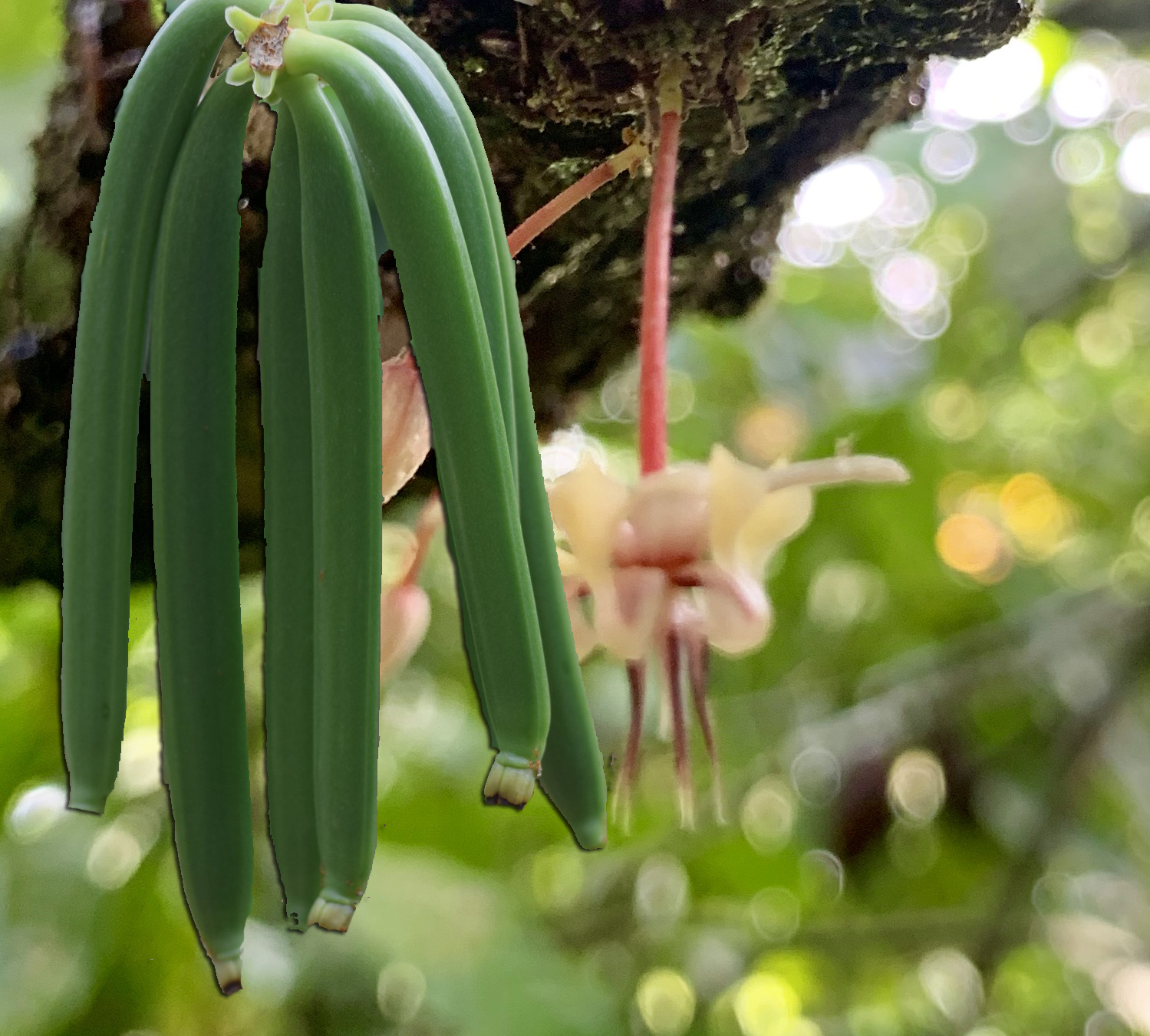
Vanilla
In the world of flavours, chocolate and vanilla stand as polar opposites, captivating the hearts of many. It's often believed that one must choose sides - either team chocolate or team vanilla.
However, let me reveal a delightful secret: embracing both can lead to a mesmerizing flavor alchemy! By combining real vanilla and high-quality chocolate, we unlock a symphony of tastes that transcends the boundaries of conventional indulgence.
Vanilla, with its intricate complexity, possesses the remarkable ability to balance bitterness and sweetness. When united with chocolate, it elevates the overall flavour profile, transforming it into a divine sensory experience.
The two ingredients join forces to create a harmonious fusion that tantalizes the palate in ways we couldn't have imagined.
It's time to break free from the constraints of "either-or" and explore the wondrous possibilities of "both-and." Embracing the real essence of vanilla and the allure of great chocolate opens a world of culinary creativity.
Whether it's in the form of luscious ice cream, decadent cakes, or velvety sauces, this dynamic duo will undoubtedly take your taste buds on an unforgettable journey.
Salt
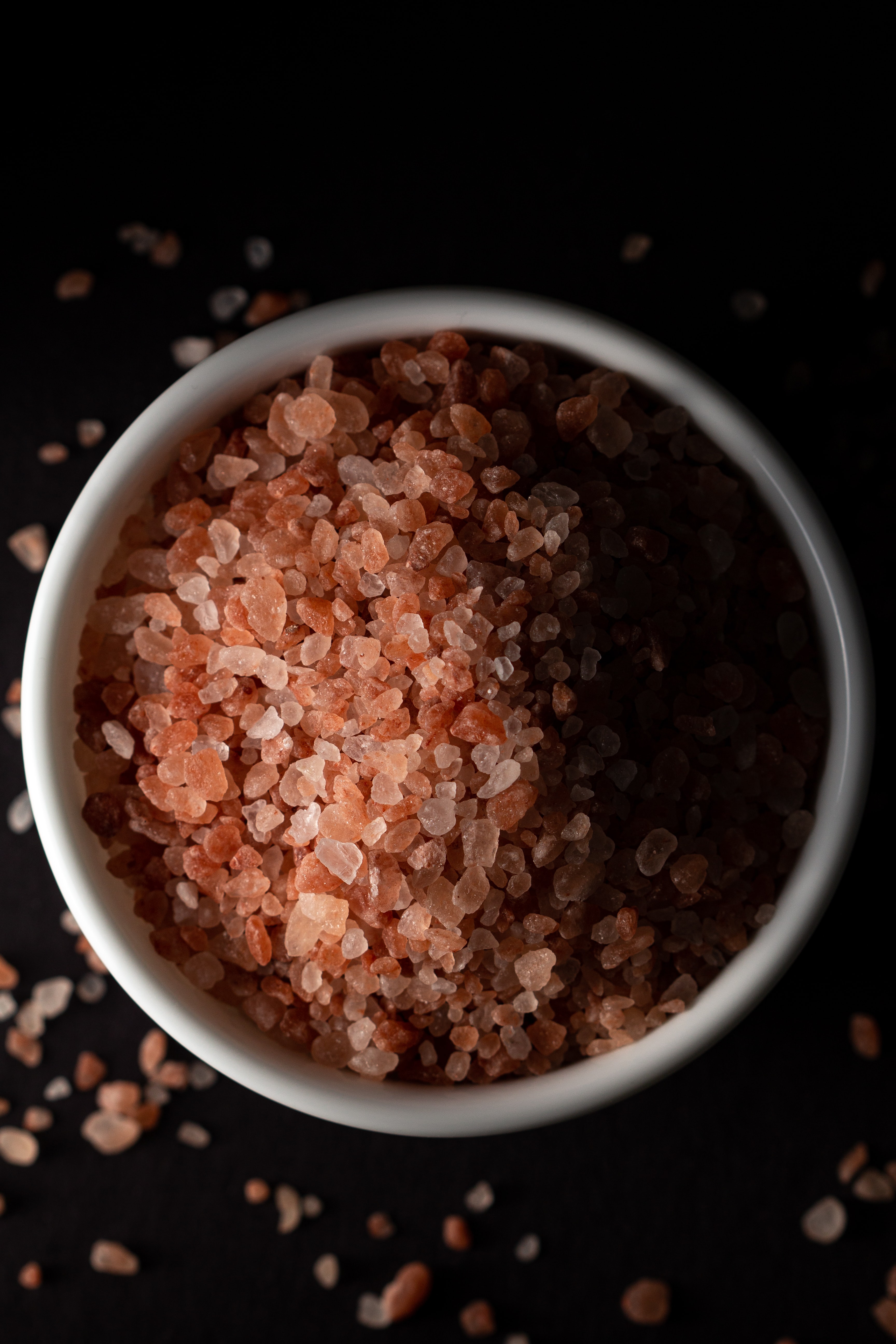
Salt, the unsung hero of the culinary world, holds the power to elevate flavours and excite our taste buds like no other. Its ability to intensify aromas makes it a surprisingly perfect pairing for chocolate, creating a captivating contrast between sweet and savory while enhancing the full spectrum of chocolate flavours.
Texture plays a vital role in the harmonious marriage of salt and chocolate, and many experts swear by its impact. A touch of salt provides a delightful crunch that beautifully juxtaposes the creamy texture of chocolate. For this purpose, flaked sea salt reigns supreme, adding an enchanting element to the chocolate experience.
Our love for salty-sweet flavour combinations is deeply rooted in our biology. The mingling of these tastes triggers the release of dopamine in our brains, which not only pleases our senses but also reduces our response to stress. It's no wonder we find ourselves irresistibly drawn to the enchanting combination of salt and chocolate.
Interestingly, scientific research has revealed a fascinating connection between salt and our perception of sweetness. The extra sugar sensors on our tongues only come alive when salt is also present, amplifying the overall taste sensation. This dynamic interaction enhances our appreciation of the diverse flavours in chocolate, making each bite a symphony of delightful sensations.
Cinnamon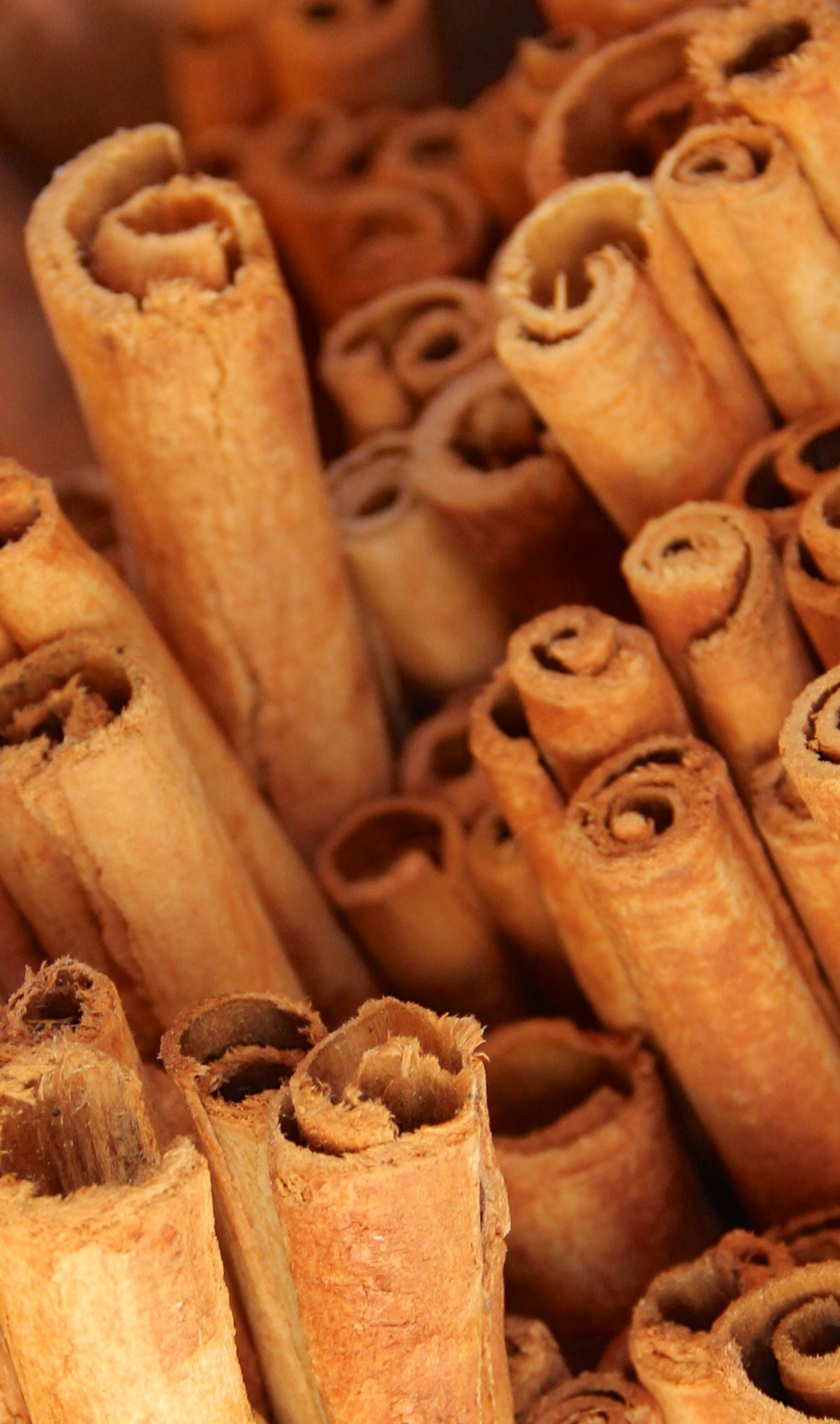
There are different types of cinnamon? Cinnamomum cassia, (Chinese cinnamon) comes from the bark of a tree in China. The more readily available type cassia cinnamon, tends to have a stronger, spicier flavour with a more pronounced sweetness. within cassia cinnamon, you'll find variations, including Saigon (Vietnam) or Kortintje (Indonesia).
However, they add that Cinnamomum verum (Sri Lanka) is considered the "true" cinnamon. Also known as Ceylon cinnamon, this spice, with its floral and citrus aromas, is often preferred over cassia, but in my view its the best to use with chocolate? My personal favourite comes from the island of Grenada ( thank you Lissette) its cinnamon has the most diversity of flavours, and is the mildest. It works well with chocolate in savoury applications like moles as well as sweets. cinnamon allows the chocolate to shine the most,
Chilli peppers
 A little heat with chocolate is a great way to pep up your taste buds. Chili peppers have been used in hot chocolate for more that four thousand years and chocolate is a staple ingredient in the chile-forward mole sauce. However, the chile-chocolate combo is not just for mole. A little cayenne pepper will bring out the richness in chocolate chip cookies. Chocolate and chiles are a natural match because they contain so many complementary flavours. Chocolate's nutty, floral, citrusy, earthy profile can be balanced or amplified by adding a particular chill’s fruity, smokey, acidic, and peppery flavours. Chilli and chocolate are both native to Mexico and Central America, where they’ve been used together and separately for thousands of years. The cocoa butter tends to tame the heat, allowing the sweet, fruity flavour of the chilli to complement.
A little heat with chocolate is a great way to pep up your taste buds. Chili peppers have been used in hot chocolate for more that four thousand years and chocolate is a staple ingredient in the chile-forward mole sauce. However, the chile-chocolate combo is not just for mole. A little cayenne pepper will bring out the richness in chocolate chip cookies. Chocolate and chiles are a natural match because they contain so many complementary flavours. Chocolate's nutty, floral, citrusy, earthy profile can be balanced or amplified by adding a particular chill’s fruity, smokey, acidic, and peppery flavours. Chilli and chocolate are both native to Mexico and Central America, where they’ve been used together and separately for thousands of years. The cocoa butter tends to tame the heat, allowing the sweet, fruity flavour of the chilli to complement.
Cardamom
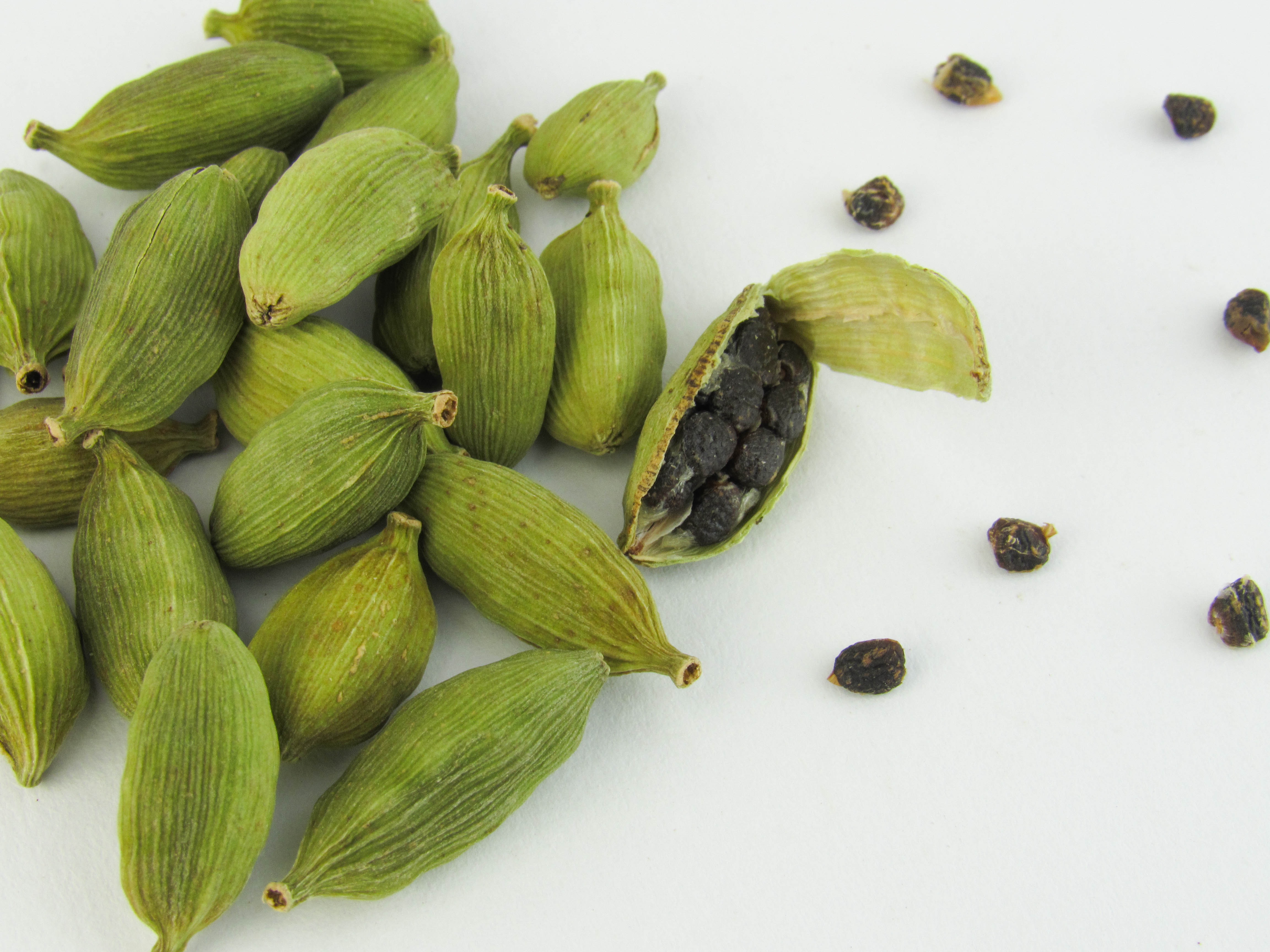
Popular in Middle Eastern and Asian cuisines, cardamom is a powdered spice made from seed pods, but you can also buy green and black cardamom pods. Green cardamom (Elleteria cardomomum) is native to India and commonly used in their cuisine cardamom has a gingery, citrusy flavour that pairs well with both dark and milk chocolate. It also has similar cooling properties to mint, so it can round out chocolate, and it’s sweet and fragrant qualities stand up nicely to chocolate's bitterness. Not a "true" cardamom, black cardamom (Amomum subulatum) originates from the Eastern Himalayas and is commonly cultivated in Nepal and China. For me i think black cardamom is a bit too sharp for dark chocolate, but it works well with milk or white chocolate, given its citrusy and smoky flavour.
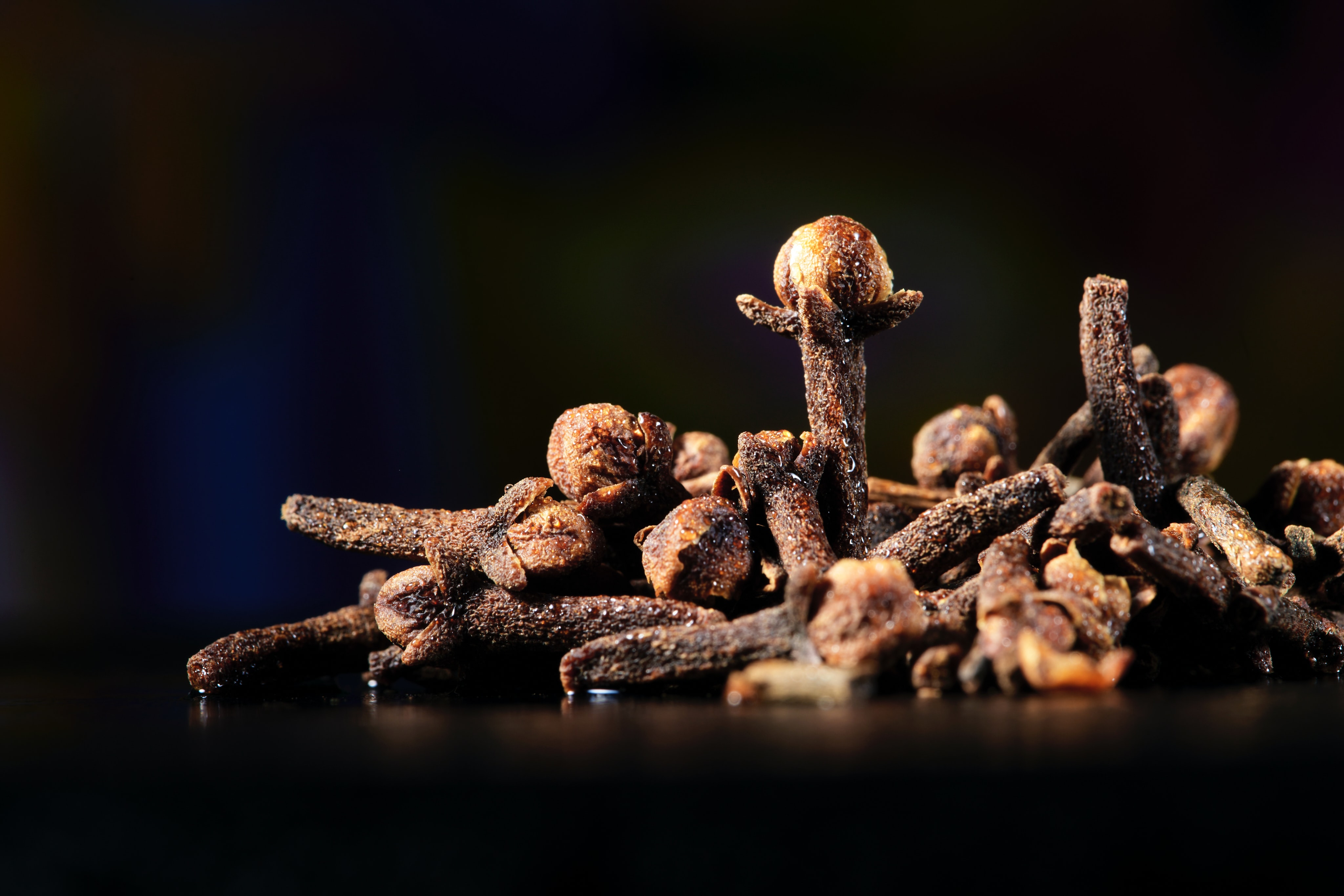 Cloves
Cloves
If you have ever looked at whole cloves and wondered what gives them their odd shape, it is because they are the dried flower buds of the clove tree. This Indonesian spice is known for having an intense taste. Whether using whole cloves or powdered spice, you have to be careful not to overwhelm the other ingredients and use in moderation.
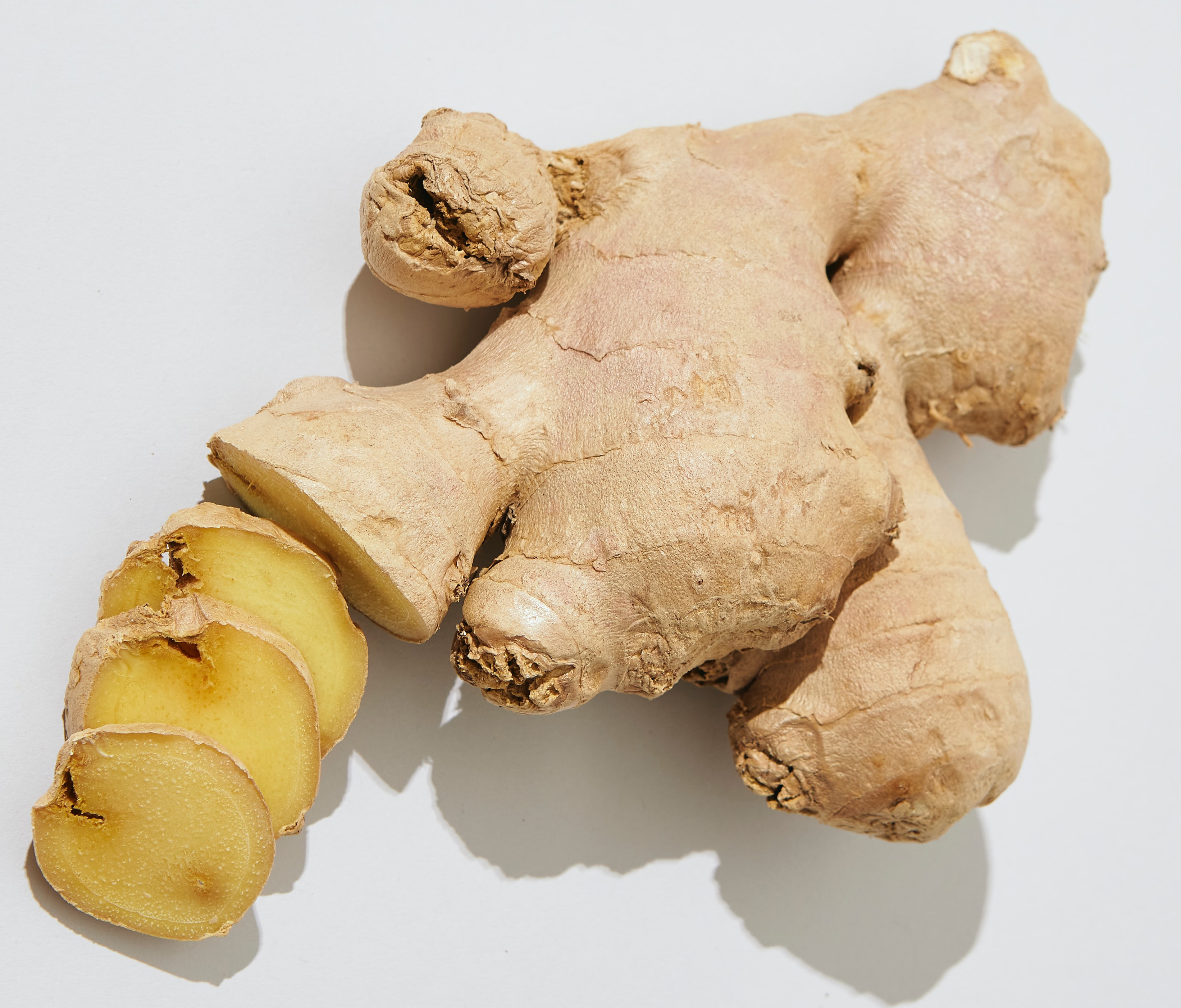 Ginger
Ginger
Ginger is one of our older spices it took root more than 4,000 years ago. But its classified as a rhizome not a root. Some cooks find fresh ginger too spicy, but it can be a great palate cleanser between bites of sushi. Don’t just peel ginger and add stick it in your chocolate it's too sour try using. milk cream infused with it or dried ground ginger, it’s milder and should add some nice citrus notes with a little subtle heat.
Orange peel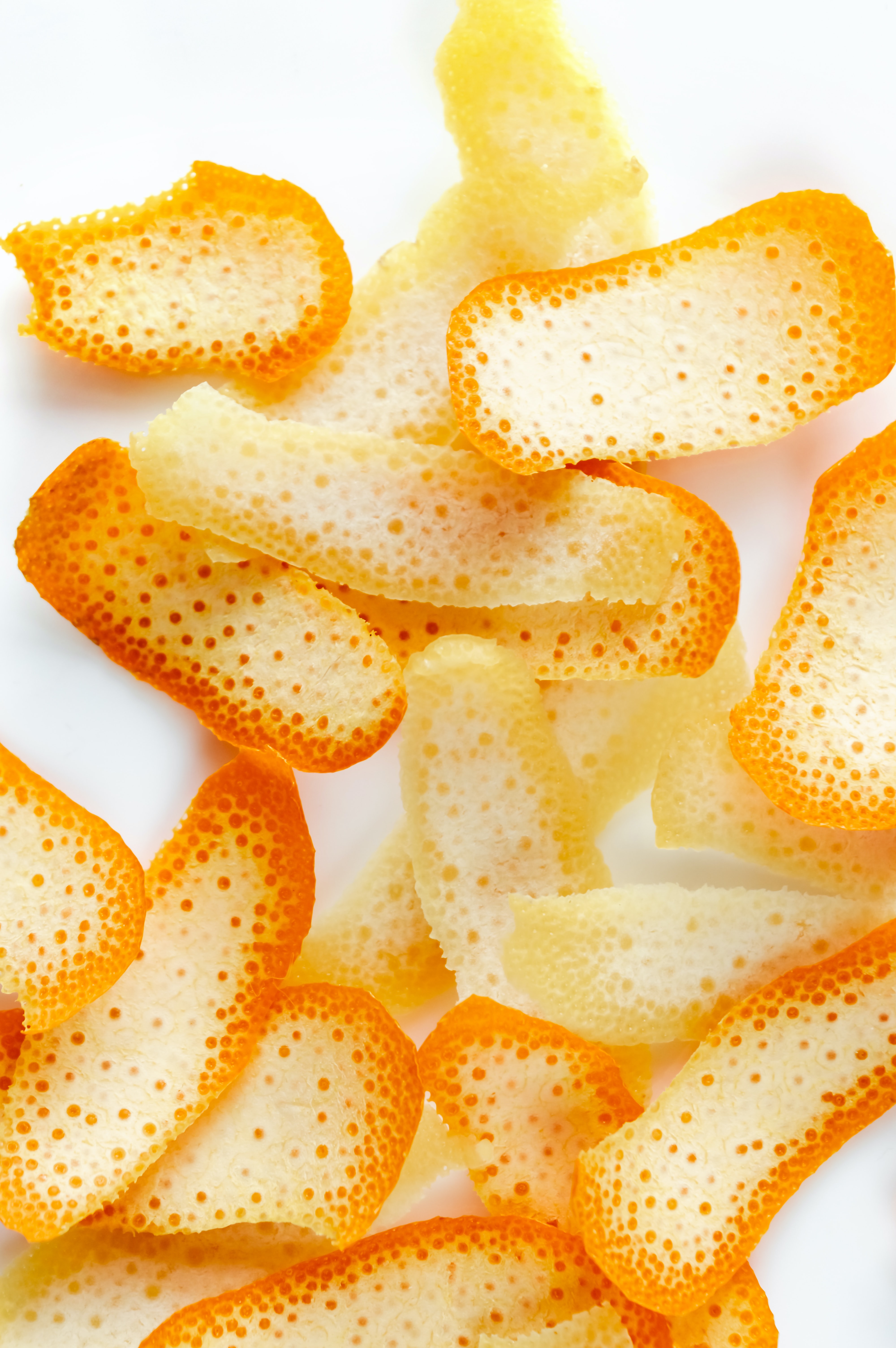
Too much orange peel can upset your stomach Like other citrus peel, it’s bitter and generally needs to be sweetened. So why does dried orange peel tastes so good in chocolate desserts? Chocolate and orange peel as an age-old flavour pairing. But a word of warning orange aroma is pervasive.
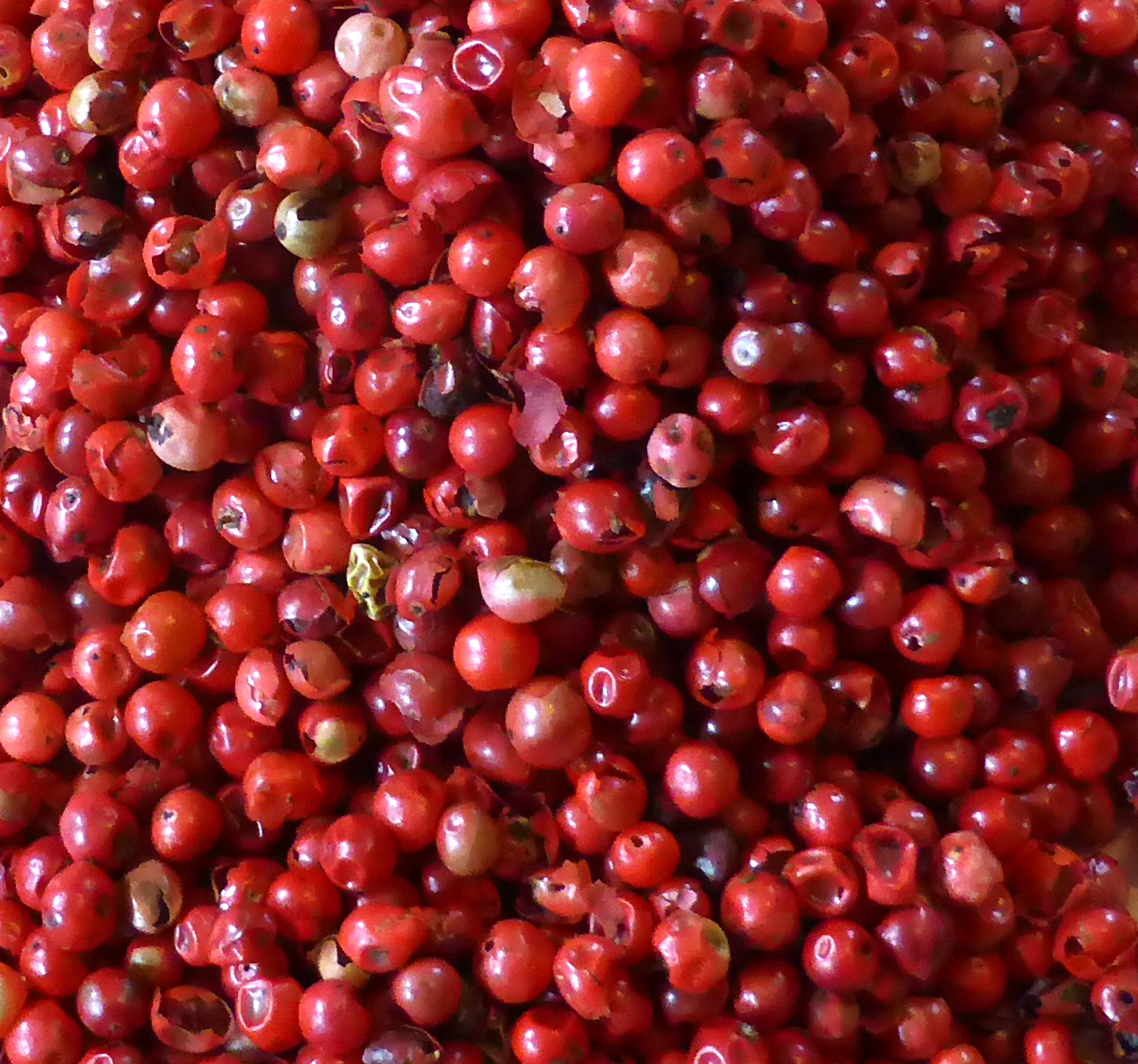 Pink peppercorns
Pink peppercorns
pink peppercorns aren’t really peppercorns they are dried berries Peru, botanically related to sumac and cashews.
Their flavour profile is fruit then floral, and finishing with zesty herbal flavours and not much pepper heat .
I sometimes combine pink peppercorns and white chocolate for the colour contrast and the extraordinary flavours it brings to creamy sweet white chocolate.
Bay leaf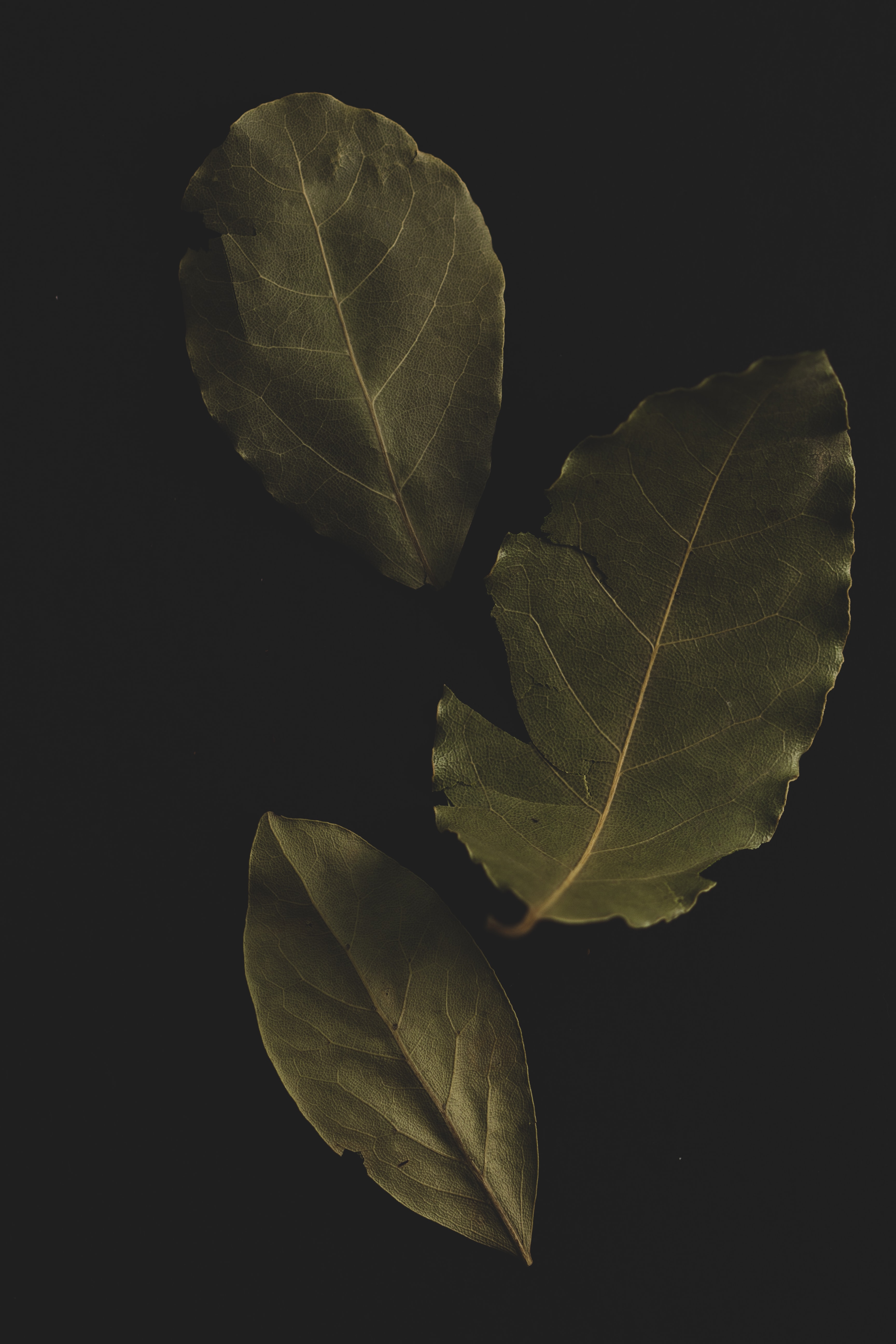
Nobody know exactly what this herb does to our food, but we cook with bay leaves because it's provides a certain je ne sais quois that provides noticeable but indescribable flavour benefits.
Bay leaves are often underrated when it comes to introducing herbal flavours into a dish. High-quality Turkish bay leaves are very fragrant with notes of pine, clove, menthol, and citrus, and can be steeped into cream for added special flavour to a ganache or panna cotta.
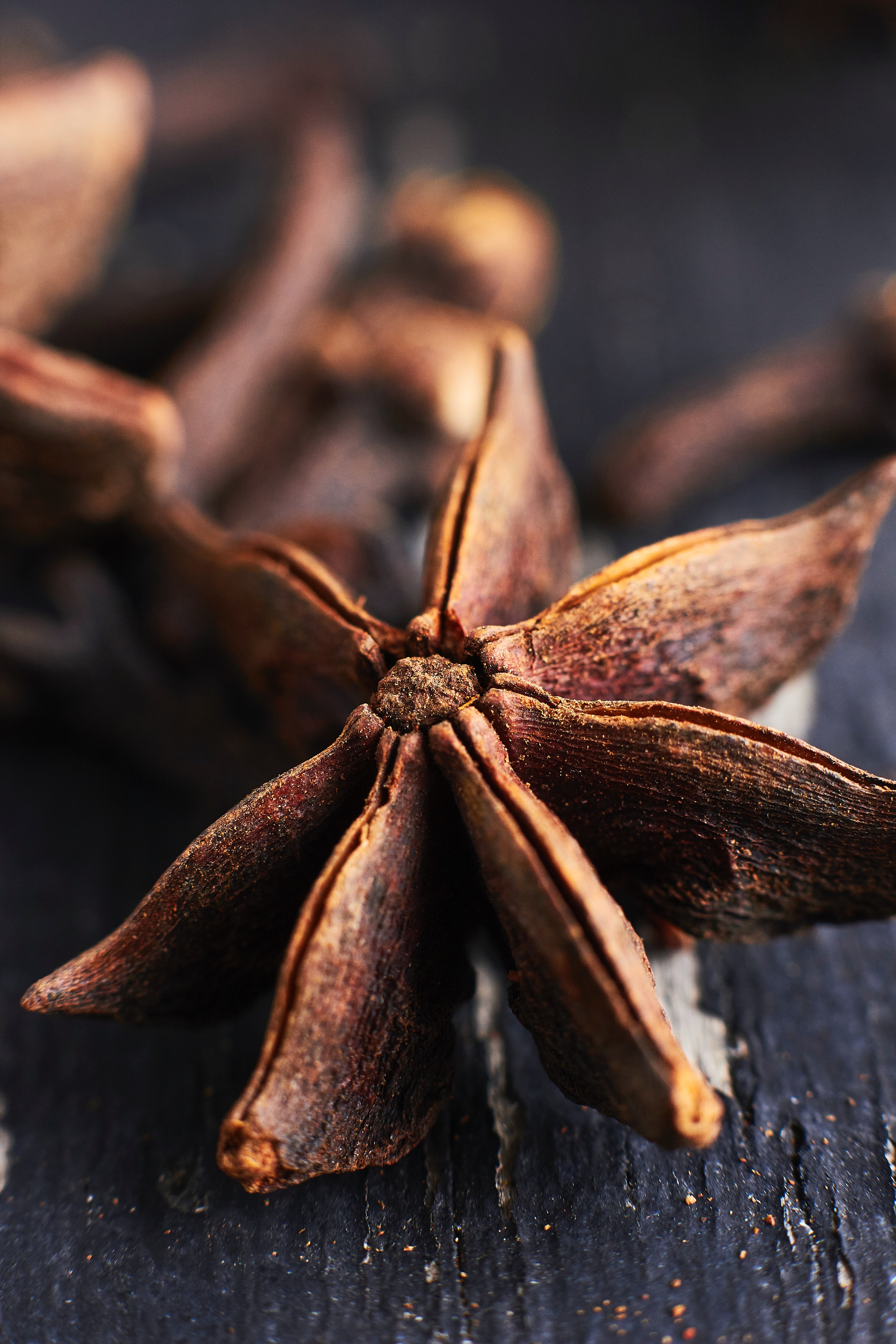 Star anise
Star anise
You might be surprised to hear that star anise and anise are not the same thing. Also called aniseed, anise is a spice part of the same family as carrots, celery, and parsley . While it's thought of like a seed, anise is actually a fruit with origins in Egypt.
While star anise is a completely different plant, native to southeastern China and Vietnam, it's also a fruit. Both spices, however, have a noticeable liquorice flavour. star anise has a more pronounced anise flavour compared to anise seed.
anise works with chocolate. the tartness of the star anise (which is actually a fruit) helps it pair well with chocolate.
Nutmeg
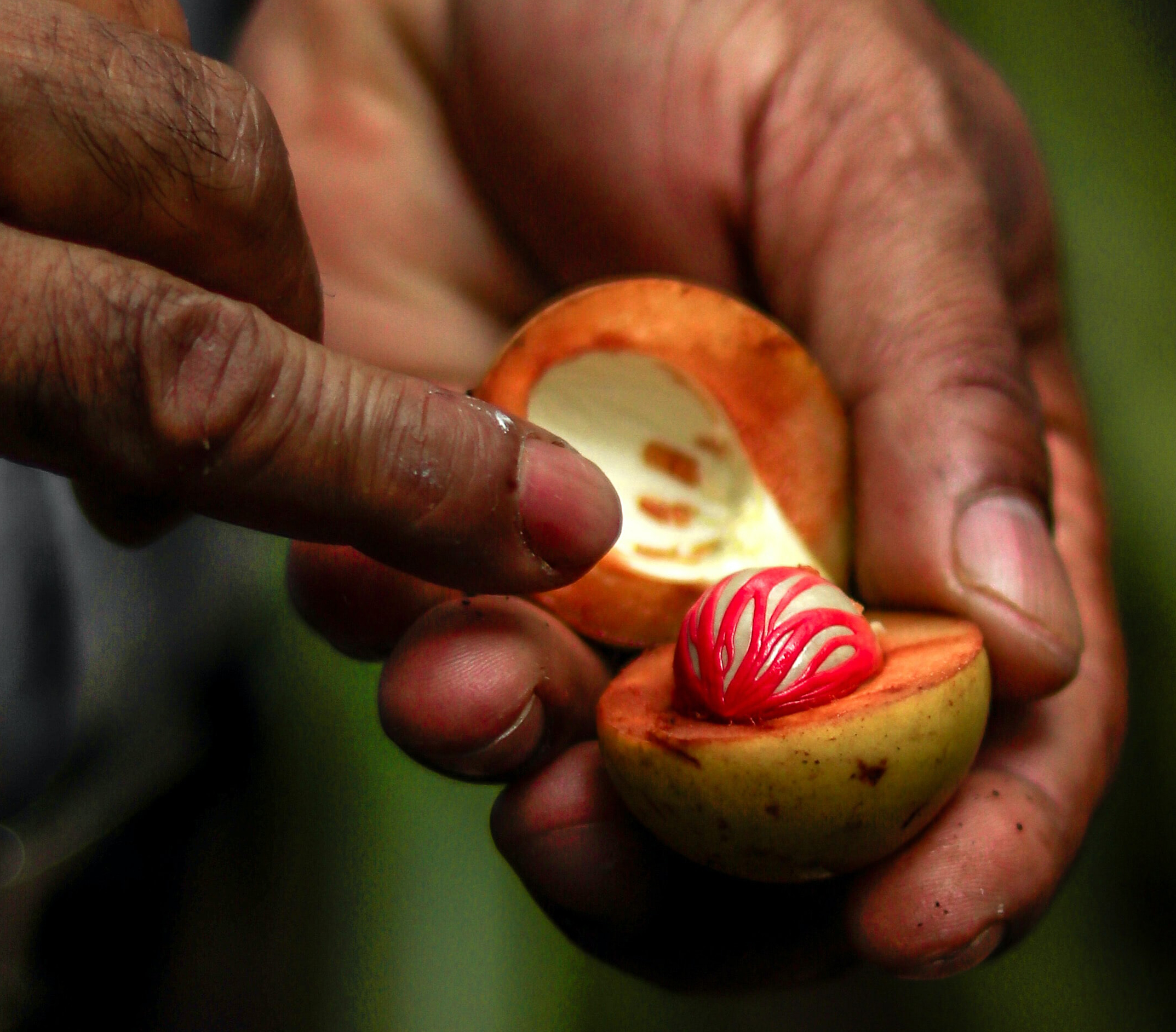
Nutmegs goes well with chocolate, but it benefits from the presence of other spices due to its strong character.
The best way to cook with nutmeg is to buy the whole seeds and grate it fresh every time. It'll have a stronger flavour and aroma than pre-ground. Like with other powerful spices on this list, a gentle touch is all that is needed to enhance the chocolate flavour. nutmeg can have a musky flavour. It’s best to use a light touch with this spice, as it can dominate. If you want something more nuanced, you'll want to go for mace, which is the spice made from the dried red lacy covering of the nutmeg seed. Nutmeg and mace are a great pairing with chocolate, adding an extra dimension of spice and aroma than the chocolate itself lacks."
Allspice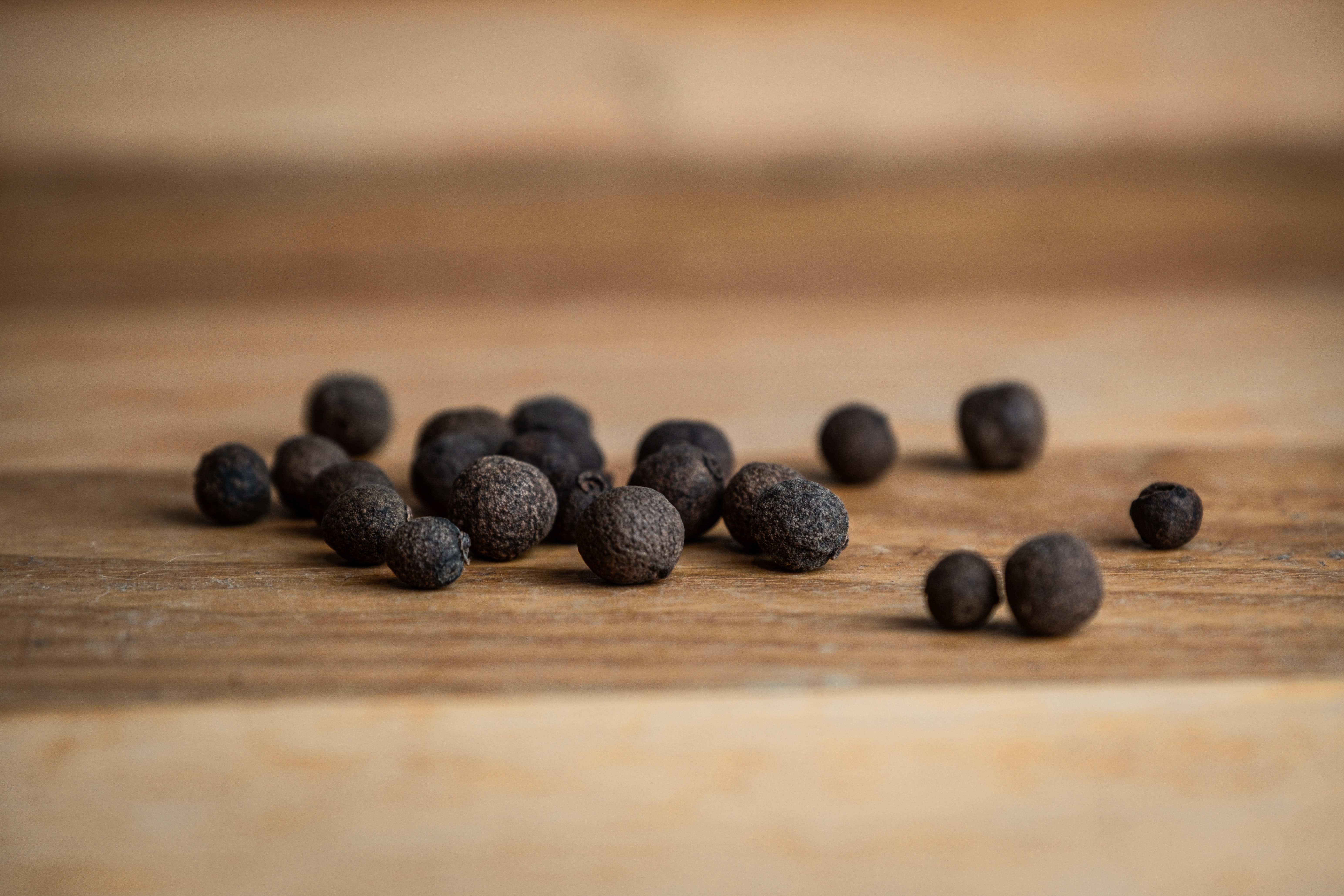
While allspice might be mistaken for a blend of spices, it is, in fact, the dried berry from an evergreen tree native to the Caribbean and Central America.
The allure of this aromatic dried berry lies in its captivating scent, reminiscent of cinnamon, nutmeg, and even cloves when ground, which is how it earned its evocative name. When combined with the indulgent charm of chocolate, the result is a harmonious fusion of flavors that will surely tantalize your taste buds.
Picture yourself in a Caribbean paradise, surrounded by the warm breeze carrying the essence of allspice. As you take a bite of chocolate infused with this fragrant treasure, you'll be transported to a realm of pure bliss. The mingling of allspice's complex notes with the rich decadence of chocolate creates a symphony of tastes that leave a lasting impression.
Conclusion:
Spices have the power to transform chocolate, taking it beyond the familiar and introducing an array of delightful flavour combinations.
Experimentation and love for the craft allow us to discover new and exciting pairings. So, let's embrace the art of pairing spices and chocolate, elevating our culinary creations to new heights and tantalizing the taste buds of all who indulge in the magical world of spiced chocolate delights.

